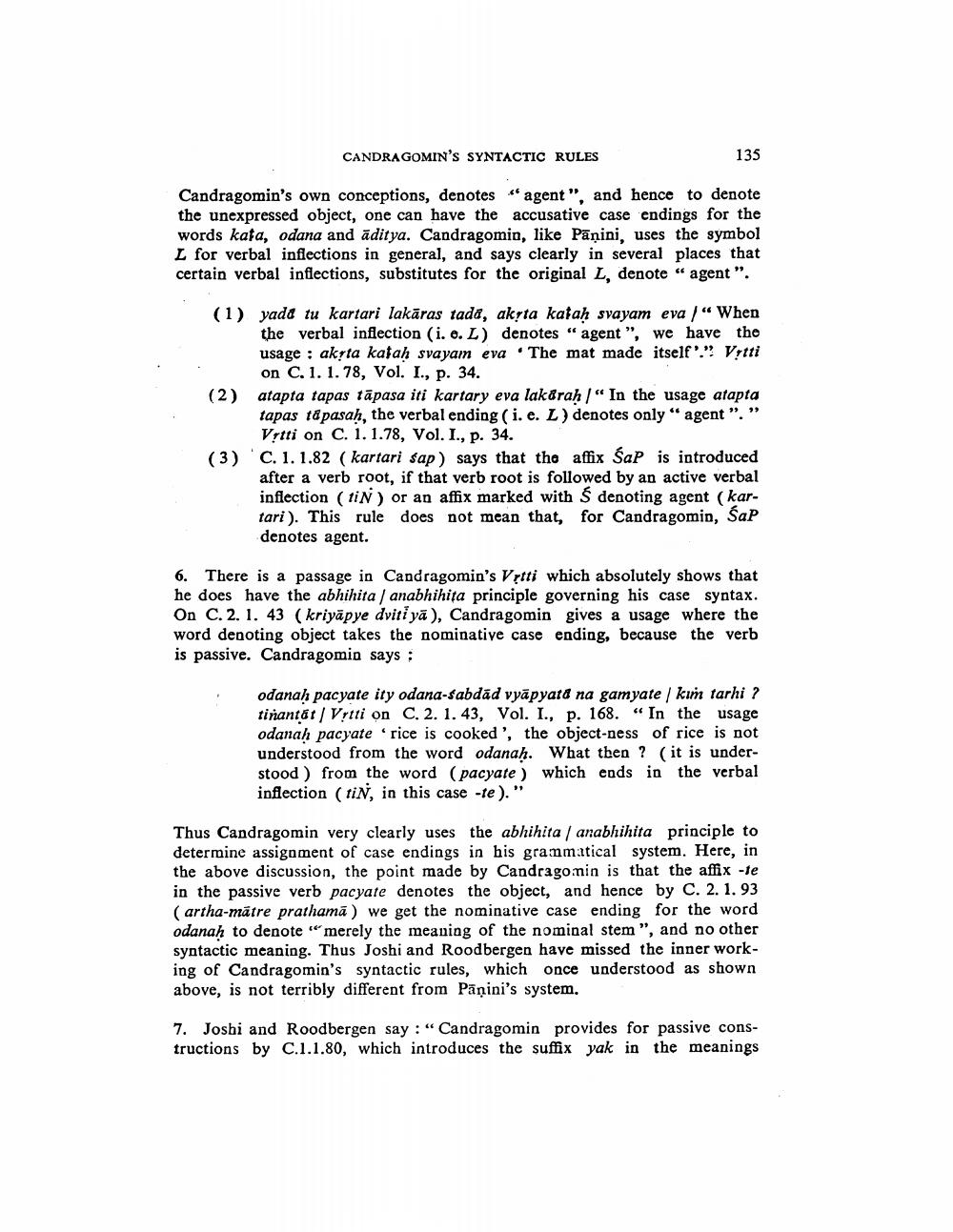Book Title: Candragomins Syntactic Rules Some Misconceptions Author(s): Mahadev Deshpande Publisher: Mahadev Deshpande View full book textPage 3
________________ CANDRAGOMIN'S SYNTACTIC RULES 135 Candragomin's own conceptions, denotes "agent", and hence to denote the unexpressed object, one can have the accusative case endings for the words kata, odana and aditya. Candragomin, like Panini, uses the symbol L for verbal inflections in general, and says clearly in several places that certain verbal inflections, substitutes for the original L, denote "agent". (2) (1) yada tu kartari lakāras tada, akṛta kataḥ svayam eva/"When the verbal inflection (i. e. L) denotes "agent", we have the usage: akṛta kataḥ svayam eva The mat made itself'." Vrtti on C. 1. 1. 78, Vol. I., p. 34. atapta tapas tāpasa iti kartary eva lakaraḥ/" In the usage atapta tapas tapasaḥ, the verbal ending (i. e. Z) denotes only" agent "." Vṛtti on C. 1. 1.78, Vol. I., p. 34. (3) C. 1. 1.82 (kartari sap) says that the affix Sap is introduced after a verb root, if that verb root is followed by an active verbal inflection (tiN) or an affix marked with S denoting agent (kartari). This rule does not mean that, for Candragomin, Śap denotes agent. 6. There is a passage in Candragomin's Vṛtti which absolutely shows that he does have the abhihita | anabhihita principle governing his case syntax. On C. 2. 1. 43 (kriyapye dviti yā), Candragomin gives a usage where the word denoting object takes the nominative case ending, because the verb is passive. Candragomin says: odanah pacyate ity odana-sabdad vyapyata na gamyate | kim tarhi ? tinantat | Vrtti on C. 2. 1. 43, Vol. I., p. 168. "In the usage odanaḥ pacyate rice is cooked', the object-ness of rice is not understood from the word odanaḥ. What then? (it is understood) from the word (pacyate) which ends in the verbal inflection (tiN, in this case -te)." Thus Candragomin very clearly uses the abhihita | anabhihita principle to determine assignment of case endings in his grammatical system. Here, in the above discussion, the point made by Candragomin is that the affix -te in the passive verb pacyate denotes the object, and hence by C. 2. 1.93 (artha-matre prathama) we get the nominative case ending for the word odanaḥ to denote "merely the meaning of the nominal stem", and no other syntactic meaning. Thus Joshi and Roodbergen have missed the inner working of Candragomin's syntactic rules, which once understood as shown above, is not terribly different from Panini's system. 7. Joshi and Roodbergen say: "Candragomin provides for passive constructions by C.1.1.80, which introduces the suffix yak in the meaningsPage Navigation
1 2 3 4 5 6 7 8 9 10 11 12 13
